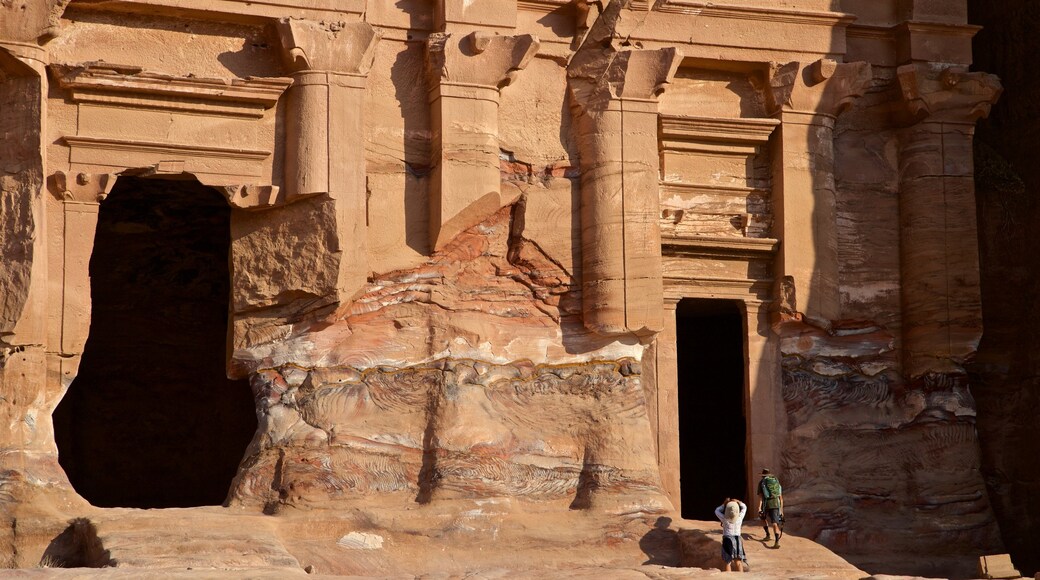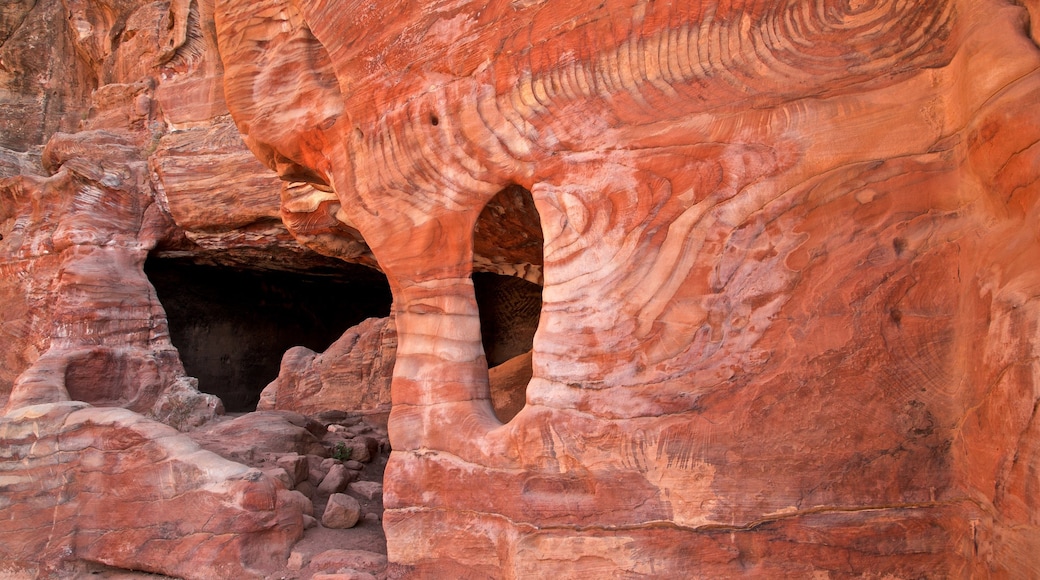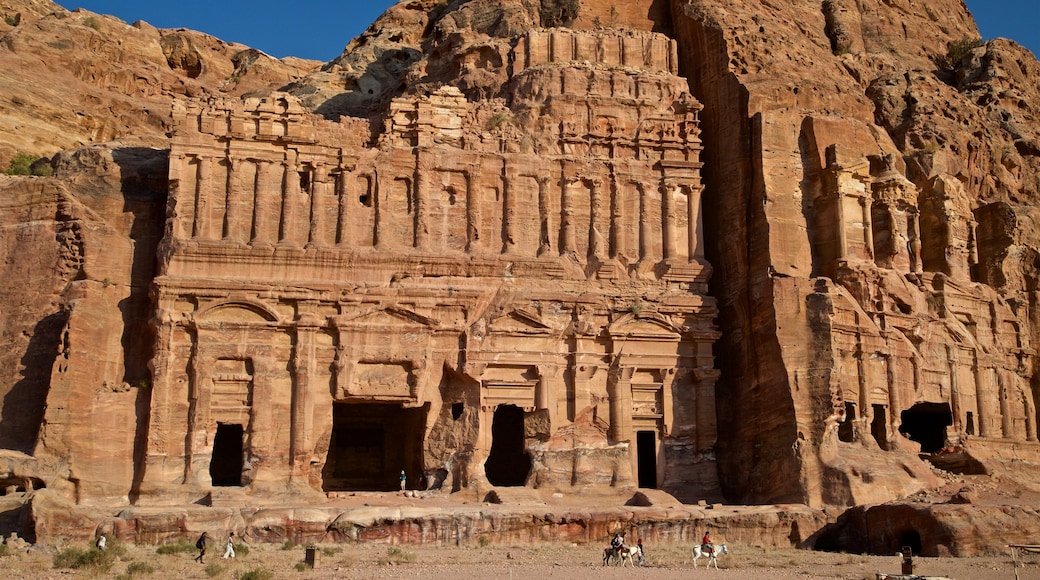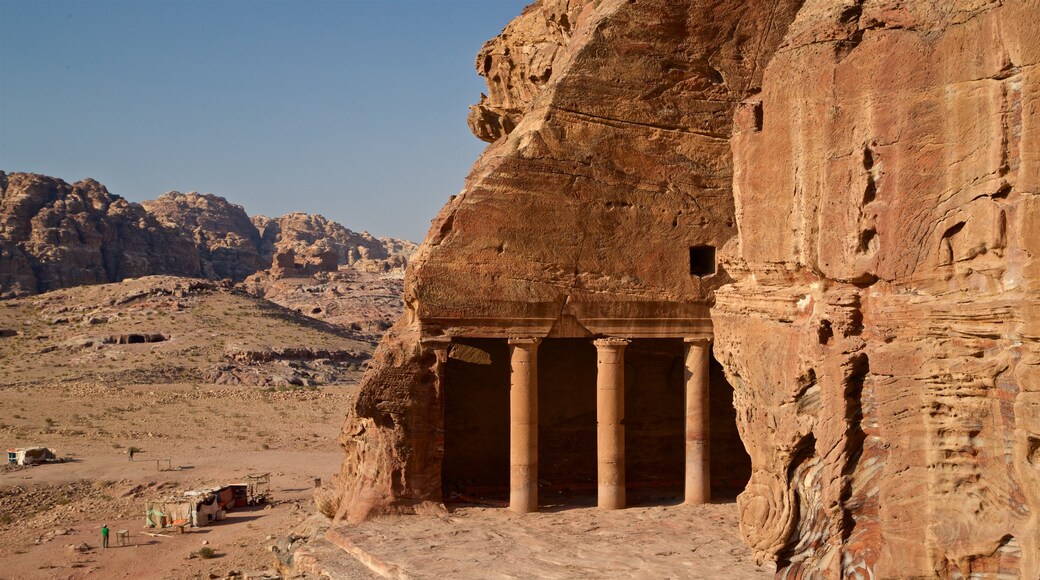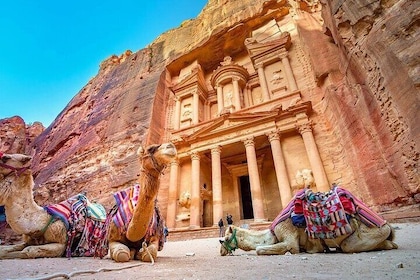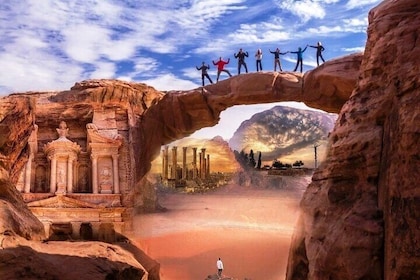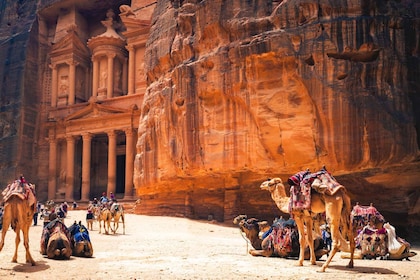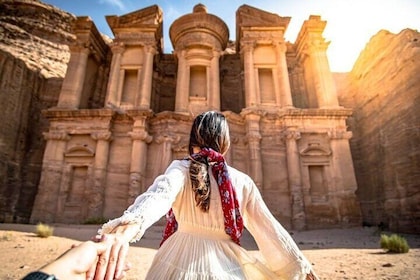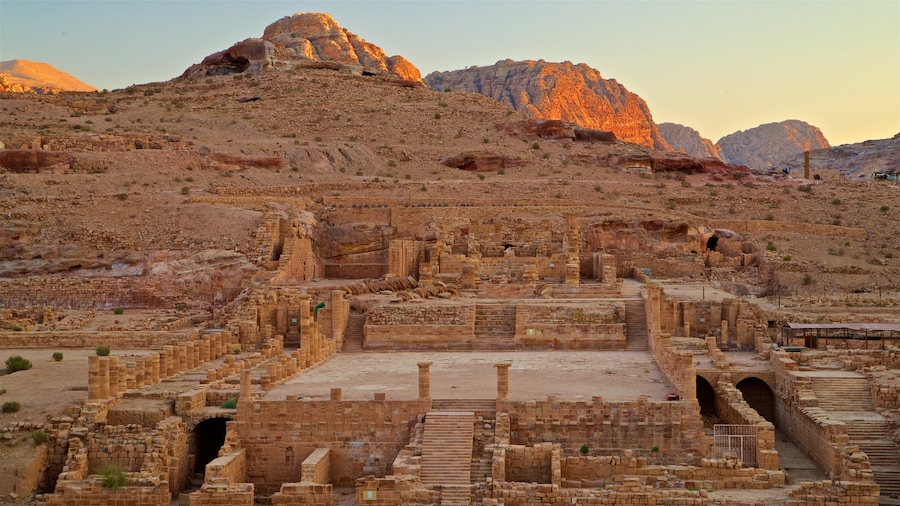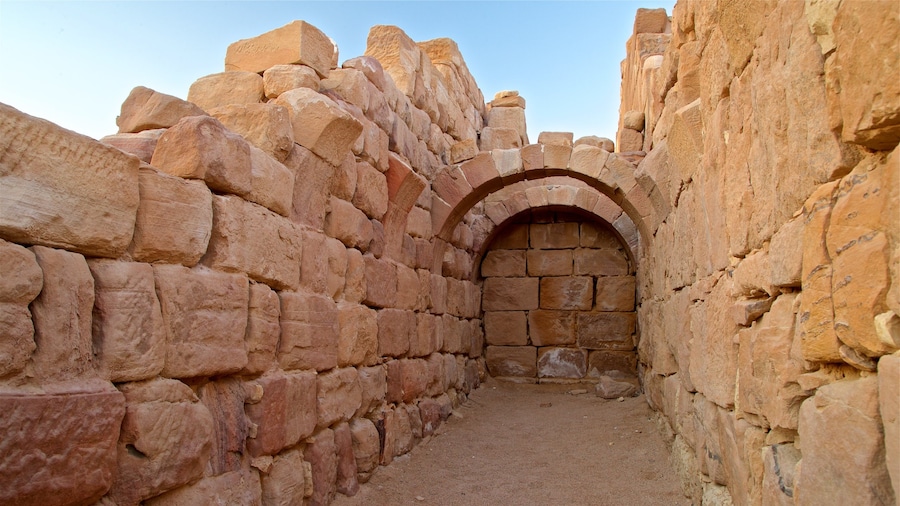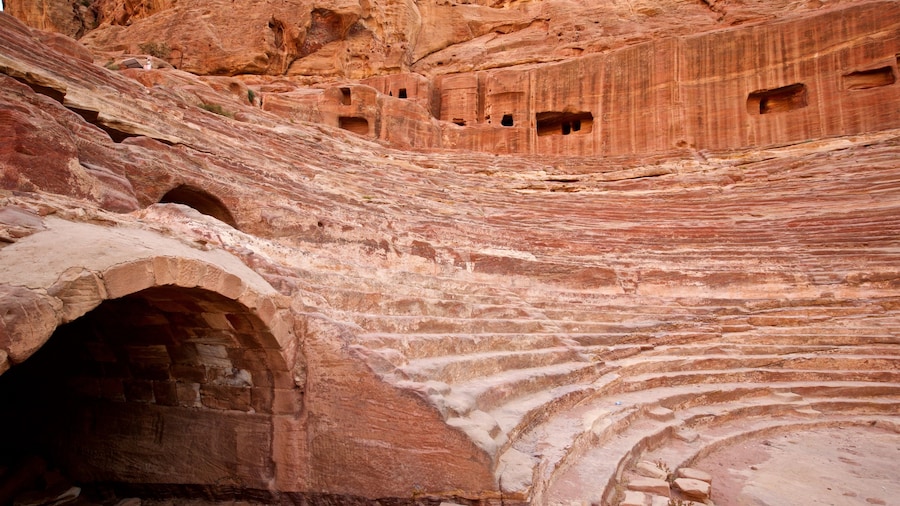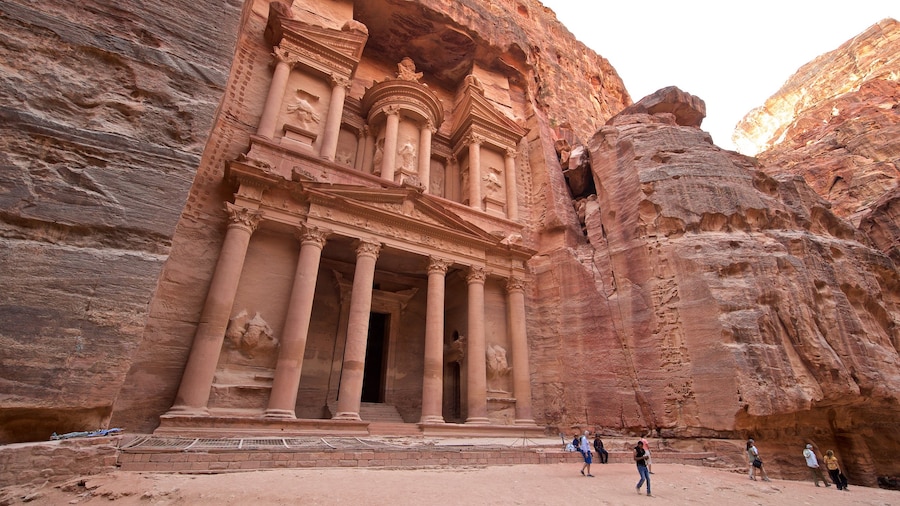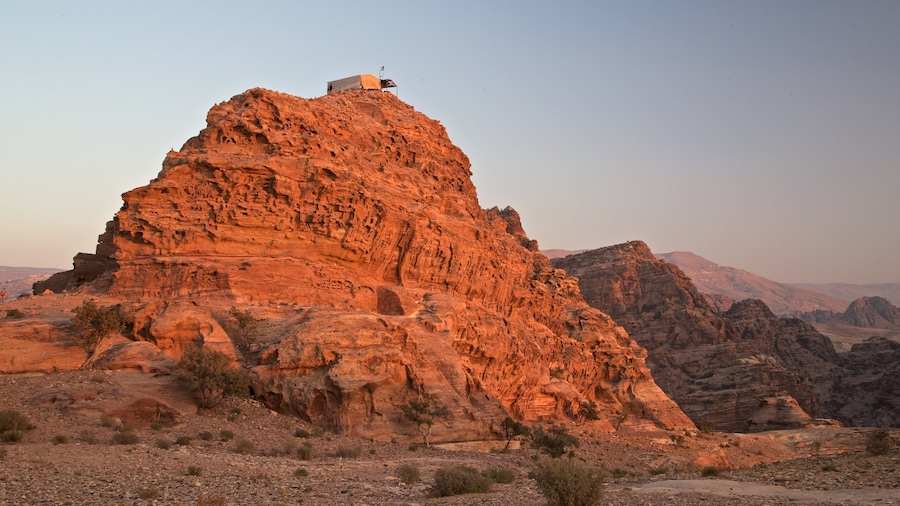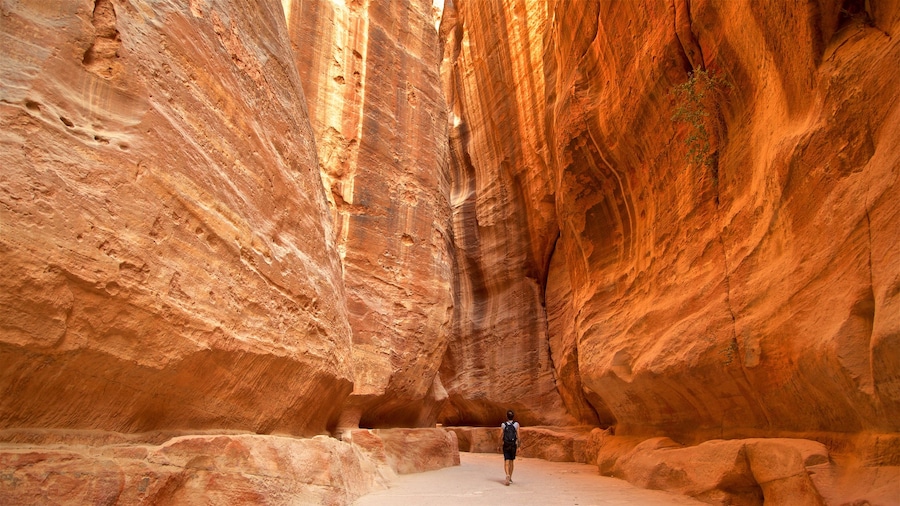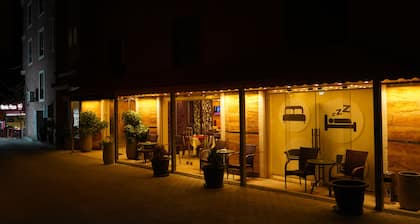The Royal Tombs are some of the most iconic landmarks in the Middle East. Carved into the side of a mountain, the tombs contain complex interiors made up of courtyards, imposing chambers and churches. Make your way through the various tombs for a closer look at the mesmerizing architecture that has survived for millennia.
Climb up the multiple sets of stairs to reach the Urn Tomb and admire the arches and layers of its façade. No one is certain whose remains lie within this tomb, but historians believe it might be those of the Nabatean kings, Malchus II or Aretas IV. Enter the courtyard and walk between the pillars separating the three burial areas.
Study the large apses at the rear of the main burial chamber. Alongside the apses, the 5th-century inscription on the wall shows how the chamber was transformed into a church. Stop at the smaller Silk Tomb next door and marvel at the range of hues adorning its rocky frontage. Another highlight is the Sextius Florentinus Tomb.
Make your way to the Palace Tomb to see the distinct layers of its façade. Farther along the trail stands the Corinthian Tomb, which is pockmarked by the effects of time. Step back from the tombs for a view of all of them at once. The sight of the palaces carved into the colorful mountain rock is one of the most exceptional vistas in the world.
The tombs open daily from early morning until late afternoon. Note that these structures are a little less busy than other parts of the park, since you have to climb the stairs to get here.
The Royal Tombs are located in the southeastern corner of the Petra Archaeological Park. Take camel or donkey rides or simply walk along the path that meanders through the park. While in the area, check out the Nymphaeum, the Great Temple and the Winged Lion Temple.

